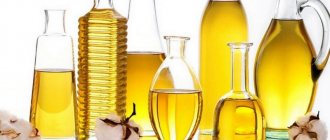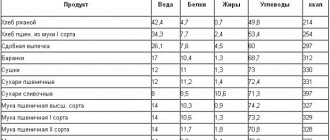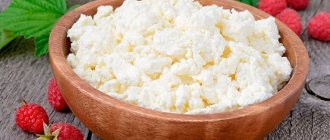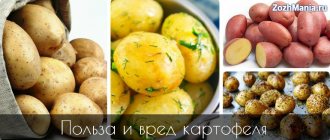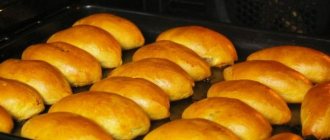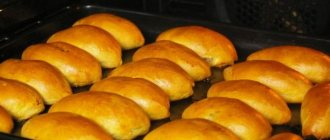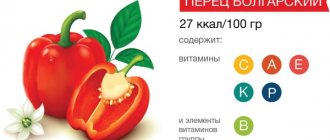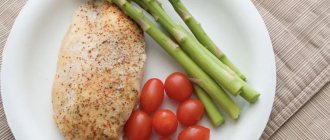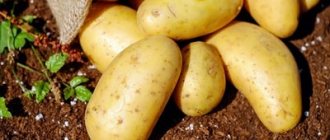Cheese was first melted in Switzerland at the beginning of the last century to increase its shelf life. As a result, it was possible not only to increase safety, but also to reduce calorie content. The resulting dish was to the taste of the residents of Switzerland, and after 5 years the production of processed cheese was patented.
Over 100 years, this product has not lost its popularity and is today used in dietary nutrition. Processed cheese is rich in proteins and less fat than hard cheese. But during the melting process, vitamins are destroyed. This means that there are fewer useful microelements in such cheese.
Calorie content, BJU
There are several types of processed cheese. Sliced cheese has a fairly dense consistency and is used for cooking soups. Sausage cheese is the hardest. It is usually sold smoked and served sliced or on sandwiches. Pasty cheese is soft and viscous.
It is spread on bread or used to make creamy sauces. Processed cheese, the calorie content and nutritional value of which depends on the type, is suitable for low-carbohydrate diets.
Moreover, sausage cheese turns out to be the most dietary - only 271 Kcal per 100 g, it contains a record amount of protein, a minimum of fat and no carbohydrates at all.
In second place is sliced cheese. Its calorie content is about 290 kcal per 100 g. There is one and a half times less protein, and a quarter more fat than in sausage. Sliced cheese is the leader here in terms of carbohydrate content: 2.5 g per 100 g of product. In third place is spreadable cheese with a calorie content of 305 kcal. It contains half the protein and one and a half times the fat of sausage cheese, and 2 g of carbohydrates.
| View | Calorie content (Kcal) | Proteins (g) | Fat (g) | Carbohydrates (g) |
| Sausage | 271 | 23 | 19 | 0 |
| Lomteva | 290 | 15 | 24 | 2,5 |
| Pasty | 305 | 11 | 28 | 2 |
In addition to its low calorie content and the correct balance of macroelements, processed cheese is useful for some microelements preserved during the melting process. First of all, these are fat-soluble vitamins A, D and E. They improve skin condition, have a beneficial effect on joints and strengthen bones.
The cheese also contains:
- calcium, which in combination with vitamin D is necessary for bones;
- phosphorus, which strengthens teeth and helps with the functioning of the brain, heart, liver and kidneys;
- sodium, which maintains water-salt balance.
But all these microelements can accumulate in the body and lead to problems with the gastrointestinal tract, cardiovascular, circulatory and excretory systems. Therefore, it is better not to overuse processed cheese.
Another problem with processed cheese is unscrupulous manufacturers who try to reduce the cost of production as much as possible. Most often, they replace protein- and calcium-rich polyunsaturated milk fats with cheap plant-based trans fats. Consumption of such products disrupts the functioning of the liver and gallbladder.
To be sure of the quality of the product, you can prepare it yourself. And if you take cottage cheese rather than cheese as the main ingredient, you can further reduce the calorie content. The technology for making sausage cheese is quite complex. But spreadable and sliced cheese can be made at home.
Processed cheeses:
Processed cheese is a product that is obtained by thermomechanical processing of one or more types of cheese with the addition of cottage cheese. The required components are melting salts or structure formers. In addition, the composition of processed cheeses often includes other dairy products, as well as dietary supplements and flavorings.
Creamy processed cheese is made from cottage cheese or low-fat cheese with the addition of dairy products, sour cream or cream.
The technology for producing processed cheeses includes the following steps.
Selection of cheese, butter and other dairy products. When choosing cheese, you should pay special attention to the degree of its ripeness, not forgetting that overripe and underripe cheeses do not melt well, and therefore they must be combined with mature ones.
The presence of spore-forming microorganisms in cheeses is unacceptable.
A particular threat is posed by butyric acid bacteria, which often cause spoilage of processed cheese, which has low acidity. Young cheese is often successfully replaced with cottage cheese when making processed cheeses. Also an essential component of such cheeses is cheese whey, which can be either condensed or dry.
Processing and grinding of raw materials. At this stage, the cheeses are cleaned of paraffin, latex or film, placed in a container with hot water, where they are kept until the rind softens. After this, the rind is cut off and the cheese is crushed or mashed. Brine cheeses are soaked in water before grinding to remove excess salt. Butter, which is a component of processed cheese, is cut into pieces weighing 1–2 kg. Sour cream and cream are filtered, and the dry ingredients are sifted.
Preparation of the mixture. The ingredients necessary to obtain processed cheese are mixed, flavoring agents and melting salts are added. The mass is left for 2–3 hours. Citric acid, as well as sodium citrate and phosphate salts are used as melting salts.
Melting mass. The process takes place in closed kettles, where the cheese mixture is heated to a temperature of 75–80 °C. In some cases it reaches 85–95 °C. The readiness of the cheese is determined by the consistency of the mass, which should become elastic and homogeneous.
Homogenization of mass. This procedure is carried out during the production of paste-like cheeses at a temperature of 75–80 °C.
Packaging. Processed cheese is packaged hot, in polymer boxes or glasses, as well as in film and foil.
Cooling. Cheeses are cooled in special chambers. The cooling period depends on the type of cheese and can last from 30 minutes to 16 hours.
This group of cheeses has been known in cooking for quite a long time and is classified as follows:
- Processed slice cheeses (suitable for cutting them into slices).
- Processed sausage cheeses (traditionally have the shape of sausages of different sizes).
- Paste-like processed cheeses (have a pasty, soft consistency).
- Sweet processed cheeses (contain sugar).
- Canned processed cheeses (have a long shelf life under certain conditions).
- Processed cheeses for lunch (used for preparing first courses, and also used as a seasoning).
Classic recipe
The easiest way to make spreadable cheese. Once you have mastered this recipe, you can change the proportions of the ingredients and make the cheese more liquid and sauce-like, or more viscous and similar to sliced cheese. But the classic recipe involves preparing spreadable cheese for sandwiches.
Composition of ingredients
For preparation you will need:
- 350 g cottage cheese;
- 70 g butter;
- 1 egg;
- 1 tsp salt;
- ½ tsp. soda;
- spices to taste;
The taste and quality of the cheese will depend on the ingredients, so it is important to take sufficiently fatty cottage cheese - at least 9%. The fat content of butter is not so important, but you cannot replace it with spread or margarine. It is better to take a small egg - about 55 g. The amount of salt is approximate, it can be changed to your taste.
Do not take ingredients directly from the refrigerator. It is worth giving them time to warm up to room temperature before cooking, then mixing them will be much easier, and the cheese will be tender and homogeneous.
Step-by-step cooking process
Processed cheese is prepared in a water bath. To do this, you will need a fireproof bowl and a deep saucepan on which to place the bowl.
To make cream cheese:
- The butter must be cut into small pieces and placed in a bowl. The butter should be melted, but not melted.
- Next, break the egg into the oil and mix.
- Then you need to add cottage cheese and quicklime soda.
- All ingredients need to be mixed and punched with a blender to break up the lumps of cottage cheese.
- Then you need to pour water into the pan up to half and boil it.
- Then you should reduce the heat and place the bowl with the curd mixture on the pan so that the bottom of the bowl does not touch the water.
- During the cooking process, you need to stir the cheese with a wooden spoon or silicone spatula until the mass becomes viscous.
- When the cheese mass begins to thicken, you need to add salt, spices and other additives.
- Then you should mix everything and cook for another 2 minutes.
- The finished mass must be removed from the heat and cooled.
Do not cook the cheese for more than 10 minutes, otherwise it will become tough. If after 5 min. After cooking, the cheese did not begin to melt, which means that the cottage cheese was too dry or not of very high quality. In this case, it is better to remove the mass from the water bath, add semolina and make a casserole.
It is better to take fatty cottage cheese. You can take soft cottage cheese - it no longer contains grains. Then the processed cheese will be more liquid. But if you want a thicker consistency, you can simply reduce the amount of oil. This will reduce the fat content in the finished cheese and its total calorie content.
Butter is responsible for the fluidity of the cheese: the more of it, the thinner the cheese will be. If you plan to make a creamy sauce from this cheese, you can increase the amount of butter to 100 g. If the cheese is then used to cook soup, you can reduce the amount of butter to 50 g.
What can I add?
As additives to processed cheese you can use:
- pepper;
- herbs;
- chopped garlic;
- finely chopped fried mushrooms,
- small pieces of ham;
- chopped olives.
How to serve a dish
It should be served in a bowl or glass jar with a lid. In the latter container, it can be stored for several months in the refrigerator, provided that it is removed from the jar only with a clean knife.
Processed cheese, whose calorie content is 257 Kcal, is perfect for sandwiches.
You can also store cream cheese sauce in a jar, but it is better to serve it in a gravy boat. To prepare cream cheese sauce, add milk to it during the cooking process as soon as it begins to melt. Then it will turn out not viscous, but liquid.
If the cheese turns out to be too thick and does not spread well, then you can cook soup from it. To do this, finely chop the cheese and add it to boiling water, soup or broth. Cook for 15 – 20 minutes. until the cheese dissolves. Pour the finished soup into bowls and serve hot.
Recipe with milk and sugar
There are both more and less calorie options for making cheese. More calories are obtained when adding fat milk, cream or sugar to cheese.
Composition of ingredients
Processed cheese, whose calorie content is 275 kcal, can be prepared from:
- 500 g fat cottage cheese;
- 100 g butter;
- 1 egg;
- 60 g milk;
- ½ tsp. soda;
- ½ tsp. Sahara;
- ½ tsp. salt;
- spices to taste.
It's best not to add ham or olives to this recipe.
Step-by-step cooking process
- Cottage cheese must be punched with a blender until smooth, add milk and mix.
- Next, add the egg and butter and mix again.
- Then you need to add salt, sugar and soda and mix again.
- The resulting mass must be cooked, stirring, in a water bath for 5 - 7 minutes.
- After the mass has become viscous, you need to add spices and cook for another 2 minutes.
This recipe can be used as a base for sweet cheese if you increase the sugar to 1 tsp. and add cocoa or finely chopped candied fruits as spices. The calorie content of such cheese will be more than 300 Kcal, and the carbohydrate content will increase 10 times.
Calorie content of processed cream cheese. Chemical composition and nutritional value.
Nutritional value and chemical composition of “processed cream cheese”.
The table shows the nutritional content (calories, proteins, fats, carbohydrates, vitamins and minerals) per 100 grams of edible portion.
| Nutrient | Quantity | Norm** | % of the norm in 100 g | % of the norm in 100 kcal | 100% normal |
| Calorie content | 230 kcal | 1684 kcal | 13.7% | 6% | 732 g |
| Squirrels | 8.5 g | 76 g | 11.2% | 4.9% | 894 g |
| Fats | 18 g | 56 g | 32.1% | 14% | 311 g |
| Carbohydrates | 0.5 g | 219 g | 0.2% | 0.1% | 43800 g |
| Organic acids | 0.5 g | ~ | |||
| Water | 44 g | 2273 g | 1.9% | 0.8% | 5166 g |
| Ash | 4.5 g | ~ | |||
| Vitamins | |||||
| Vitamin A, RE | 163 mcg | 900 mcg | 18.1% | 7.9% | 552 g |
| Retinol | 0.15 mg | ~ | |||
| beta carotene | 0.08 mg | 5 mg | 1.6% | 0.7% | 6250 g |
| Vitamin B1, thiamine | 0.02 mg | 1.5 mg | 1.3% | 0.6% | 7500 g |
| Vitamin B2, riboflavin | 0.39 mg | 1.8 mg | 21.7% | 9.4% | 462 g |
| Vitamin B5, pantothenic | 0.6 mg | 5 mg | 12% | 5.2% | 833 g |
| Vitamin B6, pyridoxine | 0.1 mg | 2 mg | 5% | 2.2% | 2000 g |
| Vitamin B9, folates | 14 mcg | 400 mcg | 3.5% | 1.5% | 2857 g |
| Vitamin B12, cobalamin | 0.25 mcg | 3 mcg | 8.3% | 3.6% | 1200 g |
| Vitamin C, ascorbic acid | 0.6 mg | 90 mg | 0.7% | 0.3% | 15000 g |
| Vitamin D, calciferol | 0.74 mcg | 10 mcg | 7.4% | 3.2% | 1351 g |
| Vitamin E, alpha tocopherol, TE | 0.4 mg | 15 mg | 2.7% | 1.2% | 3750 g |
| Vitamin H, biotin | 3.6 mcg | 50 mcg | 7.2% | 3.1% | 1389 g |
| Vitamin RR, NE | 5.7 mg | 20 mg | 28.5% | 12.4% | 351 g |
| Niacin | 0.2 mg | ~ | |||
| Macronutrients | |||||
| Potassium, K | 200 mg | 2500 mg | 8% | 3.5% | 1250 g |
| Calcium, Ca | 700 mg | 1000 mg | 70% | 30.4% | 143 g |
| Magnesium, Mg | 33 mg | 400 mg | 8.3% | 3.6% | 1212 g |
| Sodium, Na | 1050 mg | 1300 mg | 80.8% | 35.1% | 124 g |
| Sera, S | 205 mg | 1000 mg | 20.5% | 8.9% | 488 g |
| Phosphorus, P | 700 mg | 800 mg | 87.5% | 38% | 114 g |
| Microelements | |||||
| Iron, Fe | 0.8 mg | 18 mg | 4.4% | 1.9% | 2250 g |
| Copper, Cu | 60 mcg | 1000 mcg | 6% | 2.6% | 1667 g |
| Zinc, Zn | 3 mg | 12 mg | 25% | 10.9% | 400 g |
| Digestible carbohydrates | |||||
| Starch and dextrins | 0.2 g | ~ | |||
| Mono- and disaccharides (sugars) | 2.3 g | max 100 g | |||
| Essential amino acids | 7.625 g | ~ | |||
| Arginine* | 0.53 g | ~ | |||
| Valin | 1.205 g | ~ | |||
| Histidine* | 1.13 g | ~ | |||
| Isoleucine | 0.83 g | ~ | |||
| Leucine | 1.82 g | ~ | |||
| Lysine | 1.11 g | ~ | |||
| Methionine | 0.5 g | ~ | |||
| Threonine | 0.83 g | ~ | |||
| Tryptophan | 0.5 g | ~ | |||
| Phenylalanine | 0.83 g | ~ | |||
| Nonessential amino acids | 13.345 g | ~ | |||
| Alanin | 0.45 g | ~ | |||
| Aspartic acid | 1.5 g | ~ | |||
| Glycine | 0.3 g | ~ | |||
| Glutamic acid | 3.505 g | ~ | |||
| Proline | 2.12 g | ~ | |||
| Serin | 2.7 g | ~ | |||
| Tyrosine | 0.94 g | ~ | |||
| Cysteine | 0.17 g | ~ | |||
| Sterols (sterols) | |||||
| Cholesterol | 66 mg | max 300 mg | |||
| Saturated fatty acids | |||||
| Saturated fatty acids | 11.2 g | max 18.7 g | |||
| 8:0 Caprylic | 0.19 g | ~ | |||
| 10:0 Kaprinovaya | 0.66 g | ~ | |||
| 12:0 Lauric | 0.76 g | ~ | |||
| 14:0 Miristinovaya | 2.17 g | ~ | |||
| 15:0 Pentadecane | 0.28 g | ~ | |||
| 16:0 Palmitinaya | 5.76 g | ~ | |||
| 17:0 Margarine | 0.19 g | ~ | |||
| 18:0 Stearic | 2.83 g | ~ | |||
| 20:0 Arakhinovaya | 0.28 g | ~ | |||
| Monounsaturated fatty acids | |||||
| 14:1 Myristoleic | 0.38 g | ~ | |||
| 16:1 Palmitoleic | 0.57 g | ~ | |||
| 18:1 Oleic (omega-9) | 6.51 g | ~ | |||
| Polyunsaturated fatty acids | |||||
| 18:2 Linolevaya | 0.66 g | ~ |
The energy value of processed cream cheese is 230 kcal.
Primary Source: Created in the application by the user. Read more.
** This table shows the average levels of vitamins and minerals for an adult. If you want to know the norms taking into account your gender, age and other factors, then use the “My Healthy Diet” application.
Low fat cheese
Low-fat and lower-calorie cheese is better suited for dietary nutrition. You can reduce fat and calorie content by using less fatty cottage cheese, but it is more difficult to cook from.
Composition of ingredients
Processed cheese, whose calorie content is about 240 kcal, should be prepared from:
- 500 g cottage cheese 5% fat;
- 2 yolks;
- 100 g butter;
- ½ tsp. soda;
- 1 tsp salt.
Step-by-step cooking process
- The cottage cheese should be punched with a blender so that there are no lumps left.
- After that, all the ingredients need to be mixed until smooth and cooked in a water bath for 5-10 minutes, until the mass becomes shiny and viscous.
- Instead of a water bath, you can use a multicooker in the “steam” mode.
- During the cooking process, the mixture must be stirred.
This cooking option is the most dietary, but it contains more cholesterol due to the yolks and higher butter content. However, for people with normal cholesterol levels on a low-carb diet, this dish is suitable.
Broccoli quiche with melted cheese
Processed cheese can be used not only in sandwiches, but also in more interesting dishes. For example, bake a quiche with melted cheese and broccoli.
Composition of ingredients
To prepare quiche you will need a glass or Teflon baking dish and the following ingredients:
- Ready puff pastry;
- a pair of eggs;
- fresh or frozen broccoli;
- sliced processed cheese;
- salt and spices;
- ½ tsp. butter.
Traditionally, quiche is prepared using shortcrust pastry. But it is very fatty and high in calories, so it is better to replace it with puff pastry.
Step-by-step cooking process
- The mold must be greased with oil, and the dough sheet must be folded in half and rolled out with a rolling pin to the desired shape.
- The dough should be placed in the mold so that it completely covers the bottom, and leave sides of 1.5 - 2 cm so that the filling does not leak out.
- Broccoli needs to be cooked or fried a little. The broccoli should not be completely softened, otherwise during the baking process the quiche will turn into green mush.
- The eggs need to be broken, the whites and yolks mixed, salt and spices added.
- The sliced cheese needs to be cut into small pieces and spread evenly onto the dough.
- You should also distribute small broccoli forks evenly over the dough.
- Then you need to pour the egg mixture over everything and place it in an oven preheated to 200 degrees for 20 - 30 minutes.
- The finished pie needs to be cut into pieces.
Quiche can be served either hot or cold. Its calorie content is about 380 kcal.
Table
| element name | quantity | daily norm | |
| The nutritional value | |||
| Calorie content | 254 mg | ||
| Squirrels | 15.2 g | ||
| Carbohydrates | 23.8 g | ||
| Fats | 10.8 g | ||
| Vitamins | |||
| Vitamin B3 | 0.1 mg | 15.059 mg | |
| Vitamin B2 | 0.34 mg | 1.329 mg | |
| Vitamin PP (NE) | 4.4 mg | 15.059 mg | |
| Vitamin B1 | 0.05 mg | 1.159 mg | |
| Vitamin E (TE) | 0.2 mg | 10.882 mg | |
| Vitamin C | 2 mg | 69.118 mg | |
| Provitamin A | 0.03 mg | 5 mg | |
| Vitamin A (VE) | 0.075 mg | 0.753 mg | |
| Vitamin B5 | 0.6 mg | 3.794 mg | |
| Vitamin B6 | 0.1 mg | 1.512 mg | |
| Vitamin B9 | 0.014 mg | 0.286 mg | |
| Vitamin H | 3.6 mcg | 33.8 mcg | |
| Vitamin A | 0.07 mg | 0.753 mg | |
| Vitamin E | 0 | 15 mg | |
| Vitamin B12 | 0.3 mcg | 3 mcg | |
| Vitamin B4 | 0 | 500 mg | |
| Vitamin D | 0.35 mcg | 10.9 mcg | |
| Vitamin K | 0 | 0.085 mg | |
| Macronutrients | |||
| Calcium | 440 mg | 987.5 mg | |
| Magnesium | 21 mg | 276.177 mg | |
| Sodium | 700 mg | 948.824 mg | |
| Potassium | 225 mg | 1807.143 mg | |
| Phosphorus | 560 mg | 852.941 mg | |
| Sulfur | 152 mg | 1000 mg | |
| Silicon | 0 | 30 mg | |
| Microelements | |||
| Iron | 0.8 mg | 13.75 mg | |
| Chlorine | 0 | 2.3 g | |
| Copper | 0.06 mg | 0.806 mg | |
| Manganese | 0 | 2 mg | |
| Fluorine | 0 | 3 mg | |
| Bor | 0 | 1.4 mg | |
| Aluminum | 0 | 40 mg | |
| Titanium | 0 | 0.85 mg | |
| Strontium | 0 | 1.5 mg | |
| Iodine | 0 | 0.131 mg | |
| Zinc | 3 mg | 9.706 mg | |
| Chromium | 0 | 0.034 mg | |
| Molybdenum | 0 | 0.07 mg | |
| Vanadium | 0 | 0.01 mg | |
| Cobalt | 0 | 0.1 mg | |
| Nickel | 0 | 0.1 mg | |
| Rubidium | 0 | 0.2 mg | |
| Lithium | 0 | 0.2 mg | |
| Selenium | 0 | 0.04 mg | |
| Tin | 0 | 0.7 mg | |
| Zirconium | 0 | 0.5 mg | |
| Other elements | |||
| Alimentary fiber | 0 | ||
| Organic acids | 300 mg | ||
| Water | 46 g | ||
| Mono- and disaccharides | 23.6 g | ||
| Ash | 3.9 g | ||
| Alcohol | 0 | ||
| Starch | 0 | ||
| Saturated fatty acids | 6.1 g | ||
| Cholesterol | 31 mg | ||
| Unsaturated fatty acids | 0 | ||
This table shows the average norms of elements for an adult.
Quiche with spinach
A similar pie can be made with fresh or frozen spinach.
Composition of ingredients
- Ready puff pastry;
- a pair of eggs;
- fresh or frozen spinach;
- sliced processed cheese;
- salt and spices;
- ½ tsp. butter.
Step-by-step cooking process
- The dough should be folded in half, rolled out and placed in a greased pan.
- The cheese needs to be cut into small pieces.
- The eggs need to be beaten with spices.
- Fresh spinach should be chopped into strips 5 mm wide and sautéed until the greens begin to darken.
- Next, you need to spread the spinach over the dough, put the cheese on top and pour the egg mixture over it.
- Bake in the same way as the previous one.
If you use frozen spinach, it is better to use one that has been sautéed before freezing. Just heat it in a frying pan until completely thawed before adding it to the pie.
Cheese and vegetable omelet
Cheese and vegetable omelette is a dietary dish for 300 Kcal.
Composition of ingredients
To prepare an omelet you will need:
- chunky or very dense spreadable cheese;
- half a bell pepper;
- greenery;
- 4 cherry tomatoes;
- a pair of eggs;
- some milk;
- salt and spices.
Step-by-step cooking process
- Eggs should be broken and mixed with milk.
- Then you need to add salt, spices, finely chopped bell pepper and herbs.
- Next, you need to pour the mixture into a heated frying pan.
- Then you need to finely chop the processed cheese and sprinkle it evenly over the omelette.
- Then you need to cut the cherry tomatoes in half and place them on the omelette with the cuts down.
- Then you should cover the frying pan with a lid and fry the omelette for 5 - 7 minutes.
Cheese soup
The lowest calorie dish that can be prepared from processed cheese is soup.
Composition of ingredients
To prepare dietary cheese soup you will need:
- 80 – 100 g sliced cheese;
- a package of frozen vegetables for cooking;
- water;
- salt.
Step-by-step cooking process
- Water should be poured into a saucepan, salted and brought to a boil.
- Then you need to add finely chopped sliced cheese and cook until the cheese is completely dissolved.
- Next, you need to add frozen vegetables, cook for another 7 minutes and remove from heat.
2 ladles of this soup contain about 160 Kcal, but if there are potatoes in the vegetable mixture, the calorie content will increase to 220 Kcal.
What important information is on the label?
- Fat content . Processed cheeses can have different fat content: sliced from 5 to 65% fat in dry matter, pasty - from 20 to 70%.
- Storage conditions and shelf life . This product should be stored in a refrigerator at a temperature of +2 to +4 degrees Celsius. The shelf life may vary depending on the type and composition.
- Fillers . When choosing processed cheese with additional ingredients, it is better to choose a product with one filling (for example, cucumber or paprika). If the cheese contains ham, check that it contains ham and not flavorings.
Cheese rolls
The simplest recipe for processed cheese is a roll. This is a variation of the sandwich, but healthier and more convenient to eat on the go.
Composition of ingredients
To prepare you will need:
- thin yeast-free lavash;
- spreadable processed cheese;
- leaf salad.
Step-by-step cooking process
The recipe is simple:
- You should spread the pita bread with cheese,
- Then you need to distribute the salad over the pita bread and roll it into a roll.
This dish contains about 250 kcal and is rich in protein and fiber. If it's not filling enough, you can add sausage cheese or beef jerky. This will increase the energy value of the dish to 320 - 350 Kcal and increase the protein content.
Related Products
Cheddar Cheese (404 cal) Parmesan Cheese (420 cal) Cream Cheese (350 cal) Shredded Cheese (360 cal) Swiss Cheese (367 cal) Goat Cheese (360 cal) Shredded Cheese (420 cal) Cheese (318 cal) Gouda Cheese (356 cal) Hard Cheese (392 cal) Mozzarella Cheese (292 cal) Marble Cheese (404 cal) Feta Cheese (264 cal) Low Fat Cheese (195 cal) Blue cheese (353 cal) Brie cheese (334 cal) American cheese (371 cal) Brick cheese (371 cal) Camembert cheese (300 cal) Mexican cheese (365 cal) Cheese product (229 cal) Cheese Spread (296 cal) Faux Cheese (295 cal) Ricotta Cheese (156 cal) Cheese Topping (370 cal) Cheese Substitute (248 cal) Queso Fresco (299 cal) Neuchâtel Cheese (253 cal) Provolone Cheese (351 cal)
Menu for diet
Processed cheese can be used in a low-calorie and low-carbohydrate diet menu. It can be included in the menu for ovolacto-vegetarians.
Menu options for 1400 – 1500 Kcal:
| Eating | Dishes | Calorie content |
| Breakfast |
| 350 |
| Dinner |
| 400 |
| Snack |
| 150 |
| Dinner |
| 500 |
or
| Eating | Dishes | Calorie content |
| Breakfast |
| 520 |
| Dinner |
| 360 |
| Snack | 50 g mixture of nuts and dried fruits. | 200 |
| Dinner |
| 420 |
Example of a vegetarian menu for 1500 Kcal:
| Eating | Dishes | Calorie content |
| Breakfast |
| 520 |
| Dinner |
| 480 |
| Snack | 50g nuts. | 240 |
| Dinner |
| 380 |
A low-carbohydrate diet involves reducing carbohydrates in the diet and completely abstaining from sweets and starchy foods, but without a calorie deficit. Example of a low carb menu:
| Eating | Dishes |
| Breakfast |
|
| Dinner |
|
| Snack | 50 g nuts |
| Dinner |
|
The danger of eating processed cheese during a diet does not lie in its calorie content, but in eating this cheese with high-carbohydrate bread. Replacing the bread with fiber-rich vegetables makes the dish suitable for a low-carb diet.
If you are on a low-fat diet, it is better to consume store-bought processed cheese altogether. And when you really want it, it’s better to prepare a cottage cheese analogue that will contain less fat.
Application
This cheese is used for sandwiches, salads, snacks, and can serve as a filling for tartlets and layer cakes. It will be quite easy for every culinary enthusiast to master the technology of making processed cheese at home. At the same time, you can add various spices, seasonings and even food coloring to your taste. Cheeses are often prepared with the aroma of dill, tomatoes, garlic, cumin and many other products. This cheese can be made from ordinary fresh cottage cheese, and the higher the fat content, the tastier the finished product. You will also need milk, soda and butter; you can add any other element for taste. Cottage cheese must be melted in heated milk and soda. Then oil is added there and, if there is any spice - for example, dill. Processed cheese can be consumed after cooling.
Market Analytics
- Global cosmetics market 2021: an unprecedented test for the global cosmetics industry
- Top 10 Cosmetic Research and Development of 2021
- 2020 in the beauty industry – innovation without borders
Convenient search for beauty salons on our website
Beauty salons in Moscow Beauty salons in St. Petersburg Beauty salons in Ekaterinburg Beauty salons in Novosibirsk
Latest blog posts on our website
- Naturecream / Properties of the “Sunny” oil itself
- Naturecream / “Sugar” wrinkles - or what glycation can do
- Naturecream / Esterified oils
- Naturecream / Arnica - the magical plant of alchemists
- Naturecream / Tremella Extract - Snow Mushroom Detox for Skin
- Prostye-sovety / How to visually enlarge your lips with makeup
- Naturecream / Apricot kernel oil for face
- Naturecream / MATRIXYL3000 - the best skin elasticity stimulator
- Naturecream / SPF in Natural Oils
- Naturecream / Geranium (Pelargonium) oil for skin health and beauty
Latest forum topics on our website
- Natalya / How to properly make a gelatin mask?
- Mrs._Smith / Badly sunburned! What to do?((
- Ice / Is it necessary to combine fitness classes with a diet?
- Antonova / What can be used for hair loss?
- Radio operatorKat / Who was on a protein diet?
Other articles in this section
| Rocamadour cheese Rocamadour (French: Rocamadour) is an elite variety of cheeses originally from France. It is highly valued by gourmets, primarily for its excellent taste, aroma, and consumer qualities. Rocamadour is based on selected goat's milk, and special varieties of mold are used in its production process. This type of cheese is made only in certain geographical areas of France, and nowhere else. This is actually Rocamadour, as well as Carluse and Gama - all of them are located on the Quercy plateau, which has a warm climate and fertile lands. |
| Fontina cheese This type of cheese has been produced in the mountainous regions of the Alps since the Middle Ages, and Italy is considered its homeland (namely, the province of Val D'Agosta). Delicate Fontina cheese with an exquisite taste and unusual aftertaste is today known and loved all over the world. |
| Camembert Cheese Normandy is proud to produce such a world-famous product as Camembert cheese. It began to be made by monks in the mountains where the monastery was located, near the village of Camembert in Normandy. Actually, this is where the name of this exquisite dairy product comes from. |
| Cottage cheese 2% Cottage cheese 2% is low-fat cottage cheese, an environmentally friendly product, does not contain GMOs, chemical impurities, or harmful additives. The fat content of cottage cheese is determined depending on the fat content of the milk used. |
| Katyk 6% Katyk is a widespread sour milk in the Middle and Near East. It differs from ordinary yogurt by the method of sourdough. To prepare katyk, milk is first heated in the oven, without bringing it to a boil and losing 15-30% of the water. To avoid premature curdling, the milk is filtered and then, at a temperature of 30-40° C, the katyk of the previous day is introduced as a starter. It is thanks to the manufacturing technology that Katyk is obtained with good fat content. |
| Cheese Chanakh The North Caucasus is considered the birthplace of this type of cheese. The name of the cheese comes from the fact that it is kneaded in special pots called vats. Today, Chanakh cheese is produced mainly by Armenian cheese makers. During production, white wine, honey or syrups are added to the cheese. Chanakh cheese belongs to a variety of pickled cheeses. Thanks to the special brine, the cheeses have a special taste: slightly salty and spicy aftertaste. |
| Glazed cheese A product such as glazed cheese was released in the 30s in the Soviet Union. But they did not look like a modern manufactured product. Their taste was very different, since instead of sugar, jam and condensed milk, they add salt, cinnamon and even pepper. It wasn't until the late 50s that the first glazed cheese was produced that tasted sweet. But they were quite difficult to find, and the cheeses were very expensive. If you suddenly came across this product in a store, it was a huge success. Nowadays you can find a wide variety of this product. Cheeses are sold with all sorts of fillings, for example, jam and boiled condensed milk. The product also comes with the addition of vanillin, chocolate or without additives. |
| Cottage cheese 1% Now the fat content of cottage cheese can be very different: it can be full-fat, semi-fat or low-fat. Cottage cheese 1% is practically fat-free. It has a delicate taste and is easily digestible. Due to its low calorie content, this cottage cheese is indispensable for people losing weight. It is very filling, but not at all greasy. Cottage cheese is simply irreplaceable for children's growing organisms. |
| Bavaria Blue Cheese Since 1920, the production of this cheese began in Bavaria. What makes it different from the others is that it has blue mold. In addition to milk, which is pre-pasteurized, the composition includes cream. To “infect” the cheese with mold, metal knitting needles are specially stuck into it. This product is very popular and loved all over the world for its slightly creamy taste. This species can be easily distinguished by its appearance: a white film of mold on top and blue blotches inside. |
| Sour cream 20% (medium fat content) Sour cream is one of the most popular dairy products today. This product was actively consumed by our ancestors, but modern production technologies make it possible to make it not only tasty, but also very healthy. |
